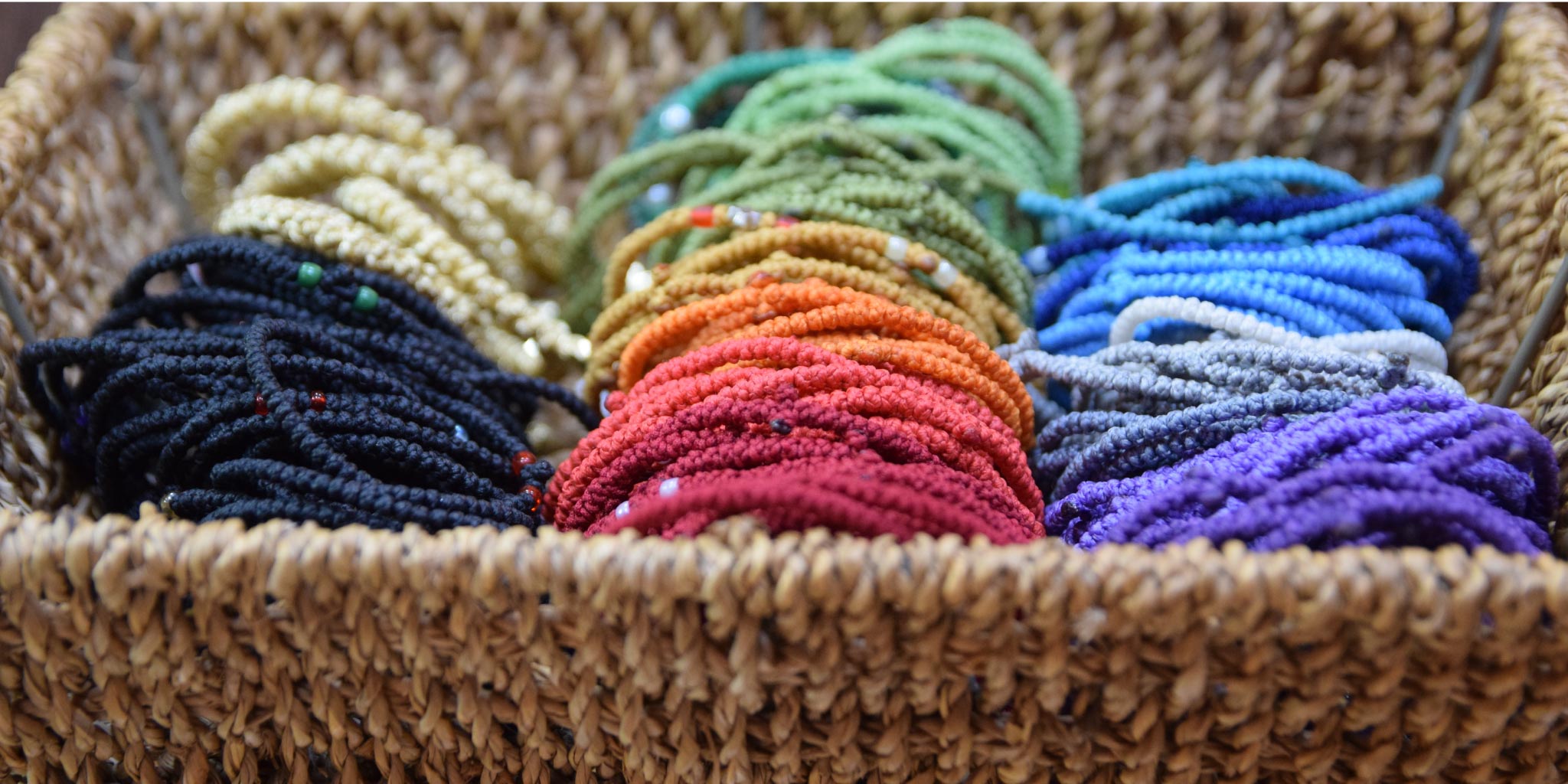The prayer rope in the Orthodox Christian symbolism is considered to be a spiritual sword, a word of God through the unceasing Jesus prayer, that consists of the following words: Lord Jesus Christ, have mercy upon me (the sinner). At each knot of the prayer rope we say one prayer. The goal of this prayer is to unite man with God and to till man’s heart with the light of the Divine grace.
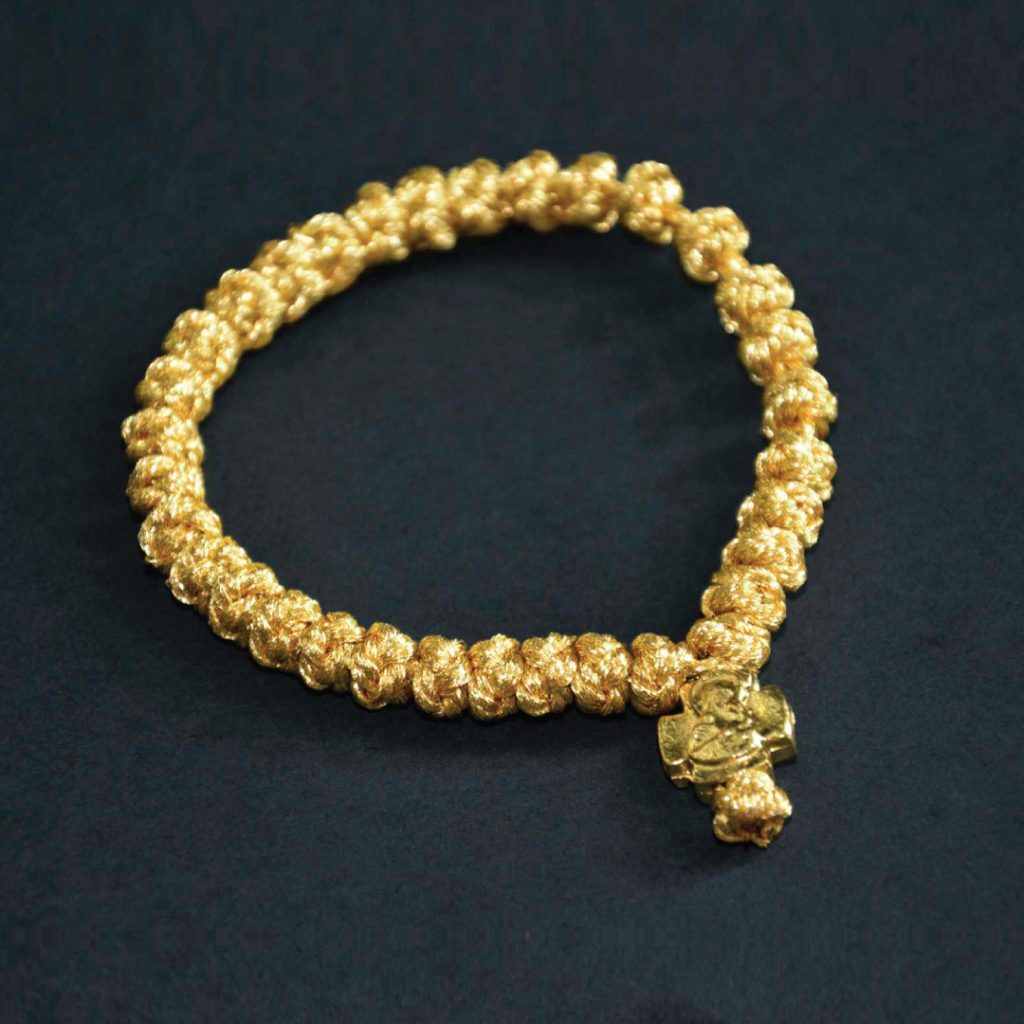
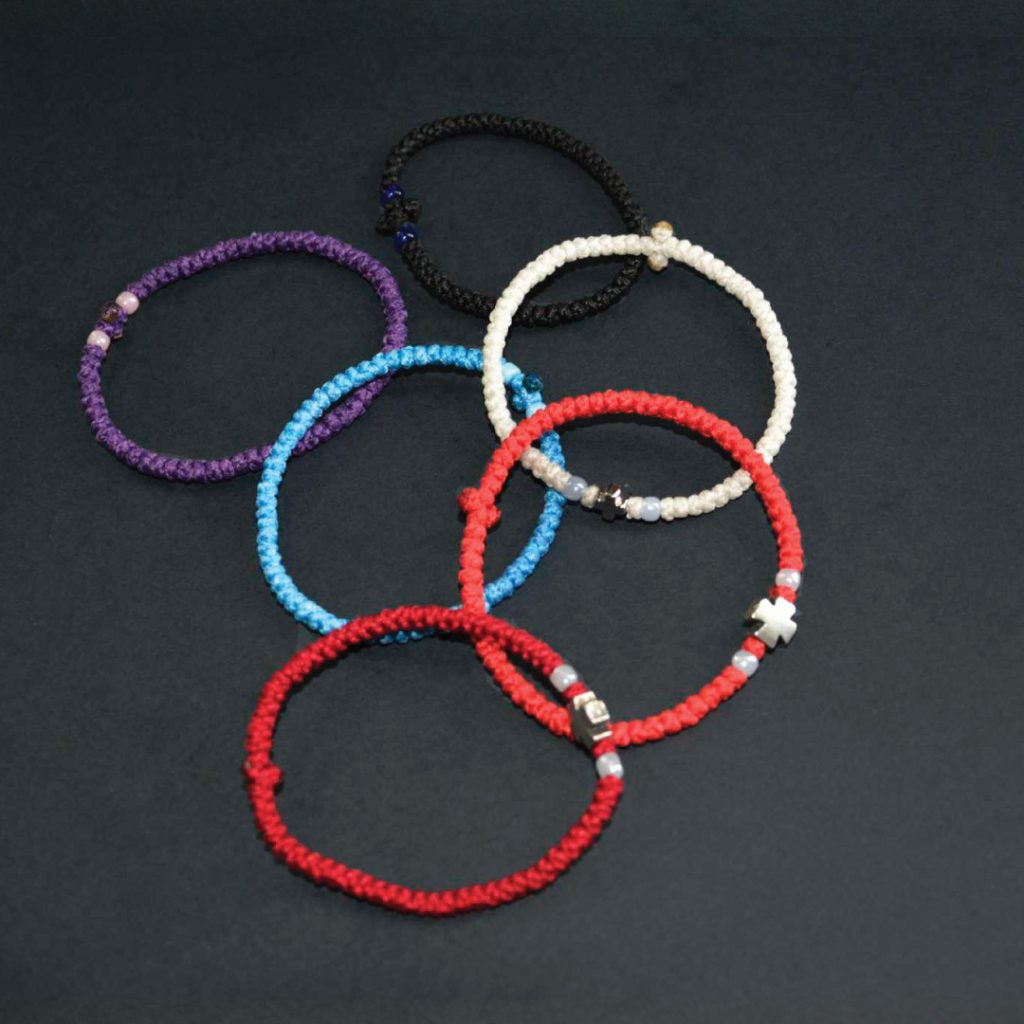
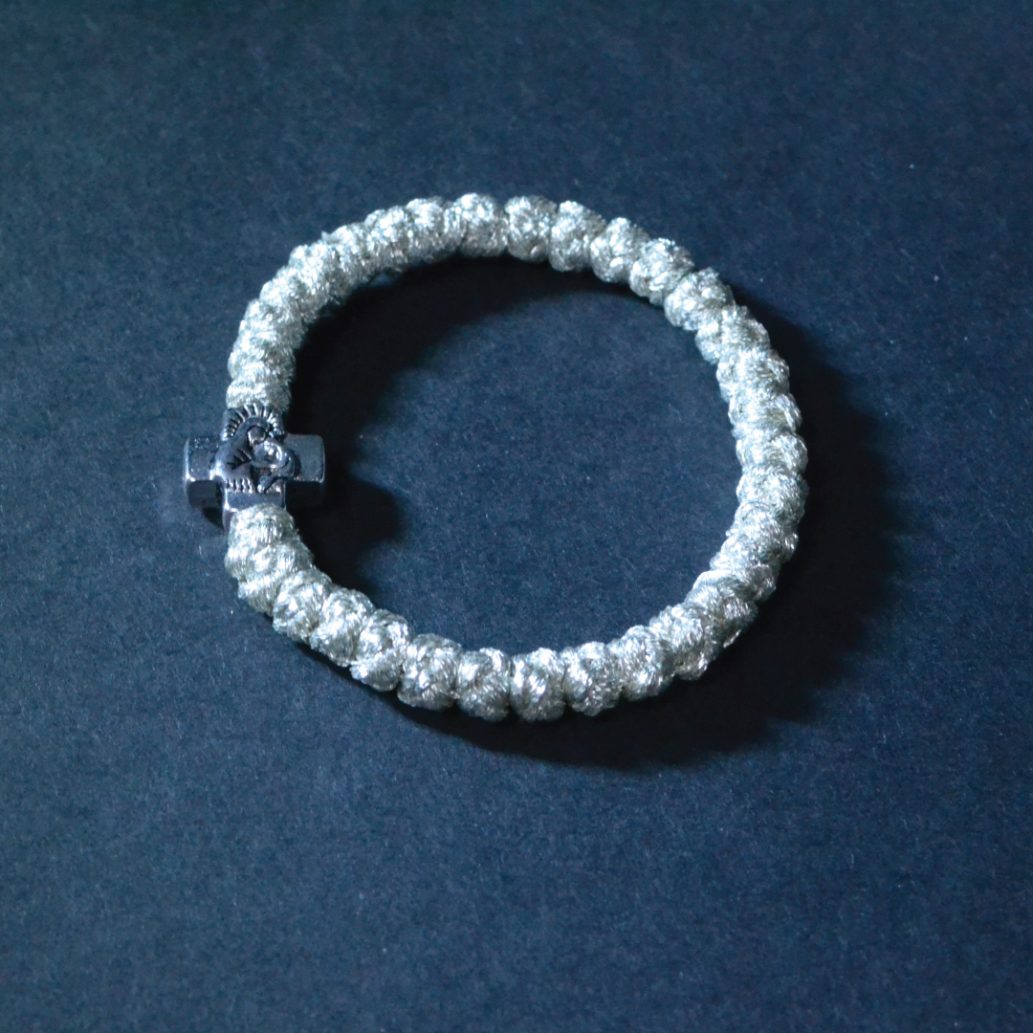
Prayer ropes
Making prayer ropes is one of the everyday activities of the monastics. During the service, or in their cells, with a constant reciting of the Jesus prayer, the monk ties a prayer rope, consisting of multiple knots.
Most often, they are made of black wool or silky lace (soutache). The black color is a symbol of repentance, however, nowadays we can find the prayer ropes in different colors. The smallest ones are made of 12 knots, and there are bigger ones of 33, 50 and 100 knots. Monastics sometimes use prayer ropes made by 300, 500 or 1000 knots.
The tradition says that sometime in the IV century, after a fervent prayer, an angel of the Lord revealed the skill of tying prayer ropes to a monk in the desert. Namely, the demons were untying the knots he had made that far, and he couldn’t thoroughly fulfill his prayer rule. Then, the angel taught him to tie complex knots in a way that every knot had 7 inner cruciform knots that the demon couldn’t untie.
Creating designs for vestments, encouraged us to learn and study the iconography, mosaics, calligraphy, frescoes, treasures with vestments, but also the traditional, mostly Macedonian, woven and embroidered clothing. That alone gave birth to a small creative impulse in us, the fruit of which is the refinement of the ceramic mugs and censers.
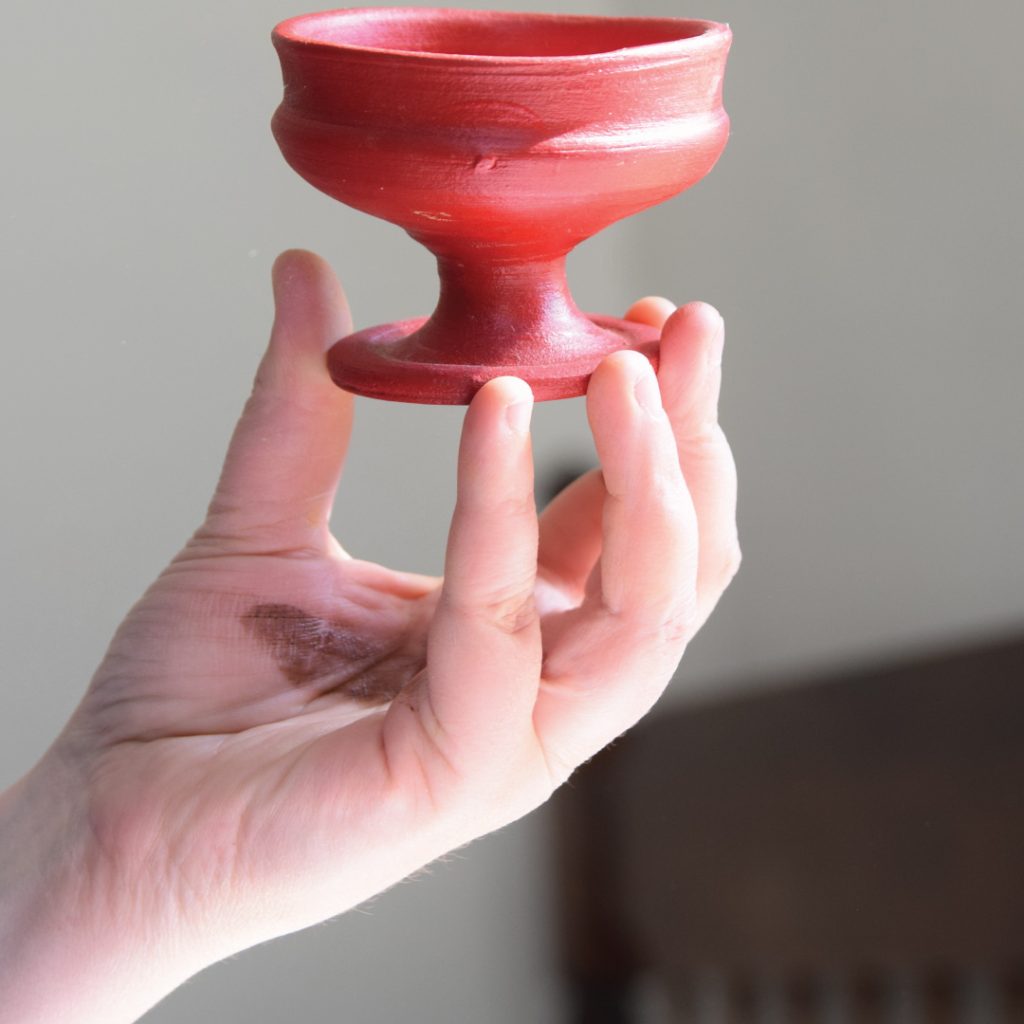
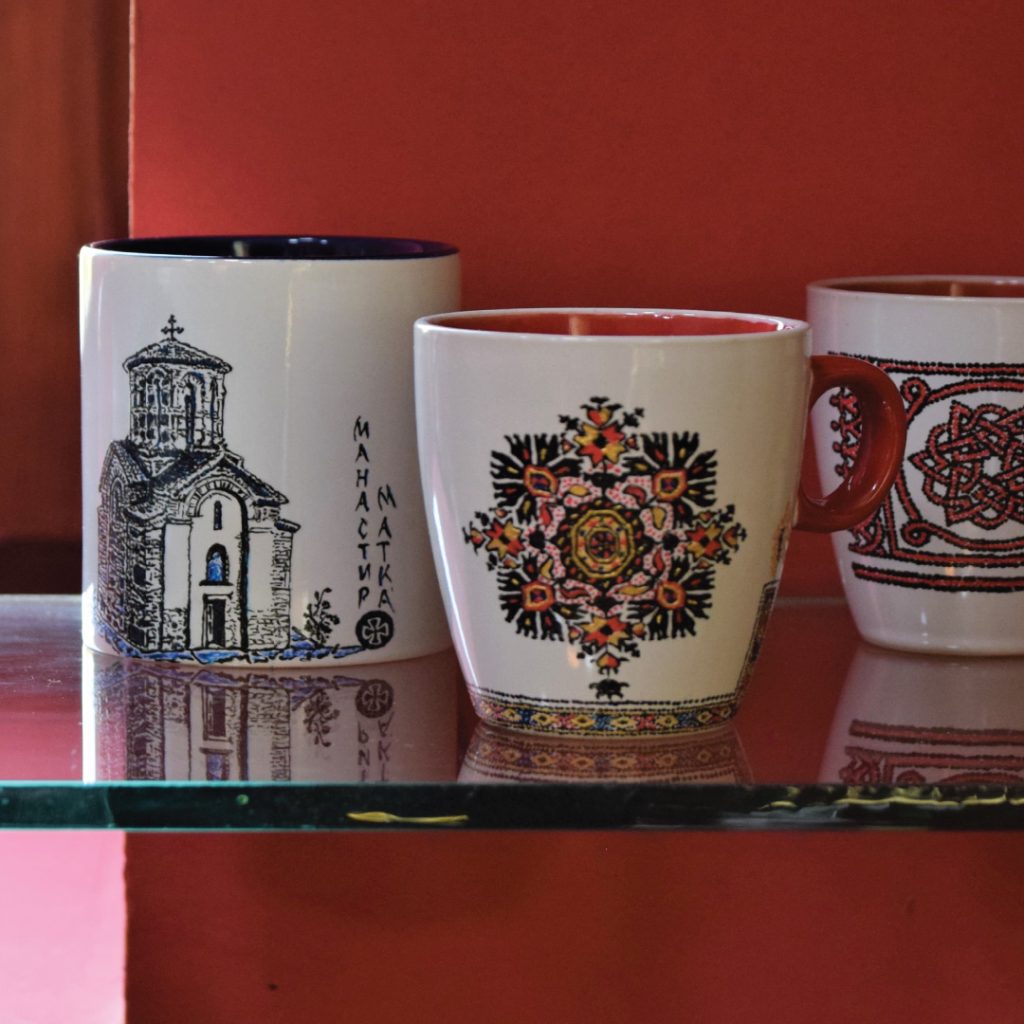
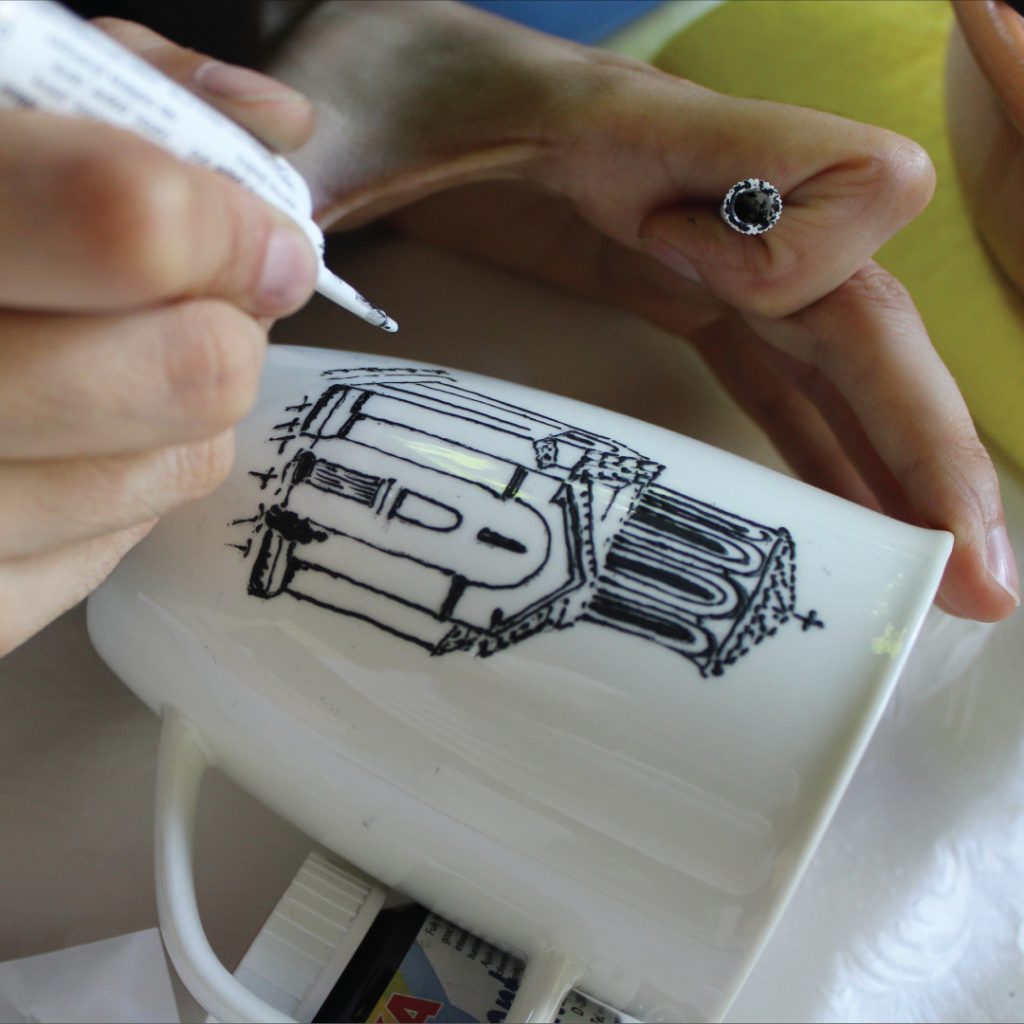
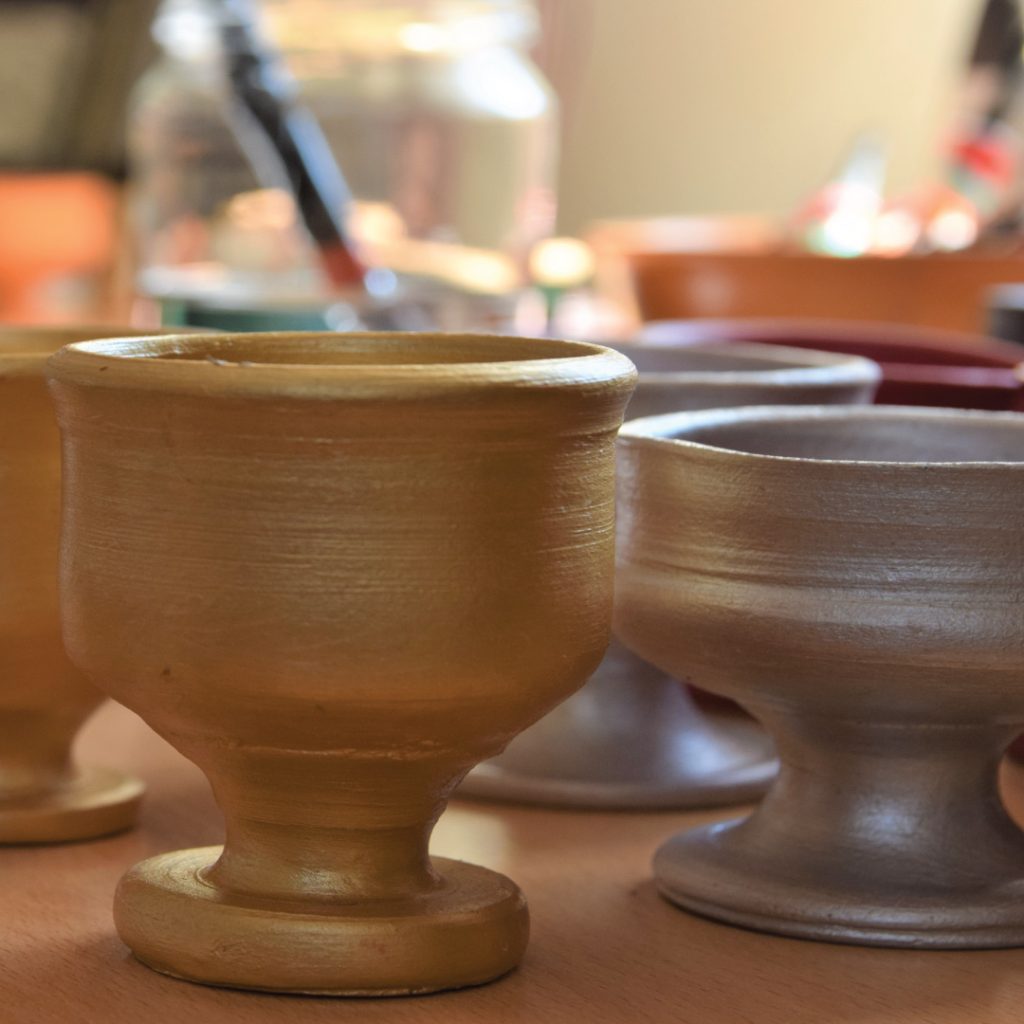
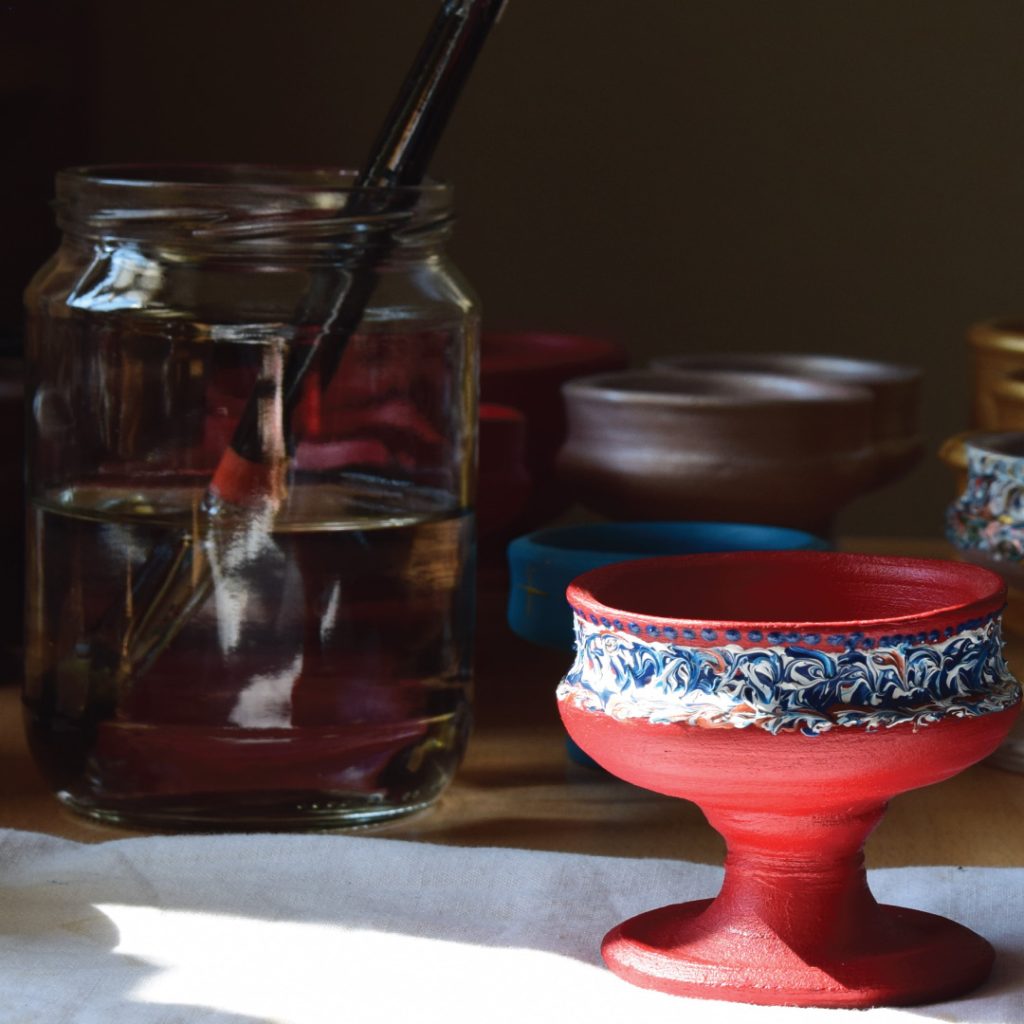
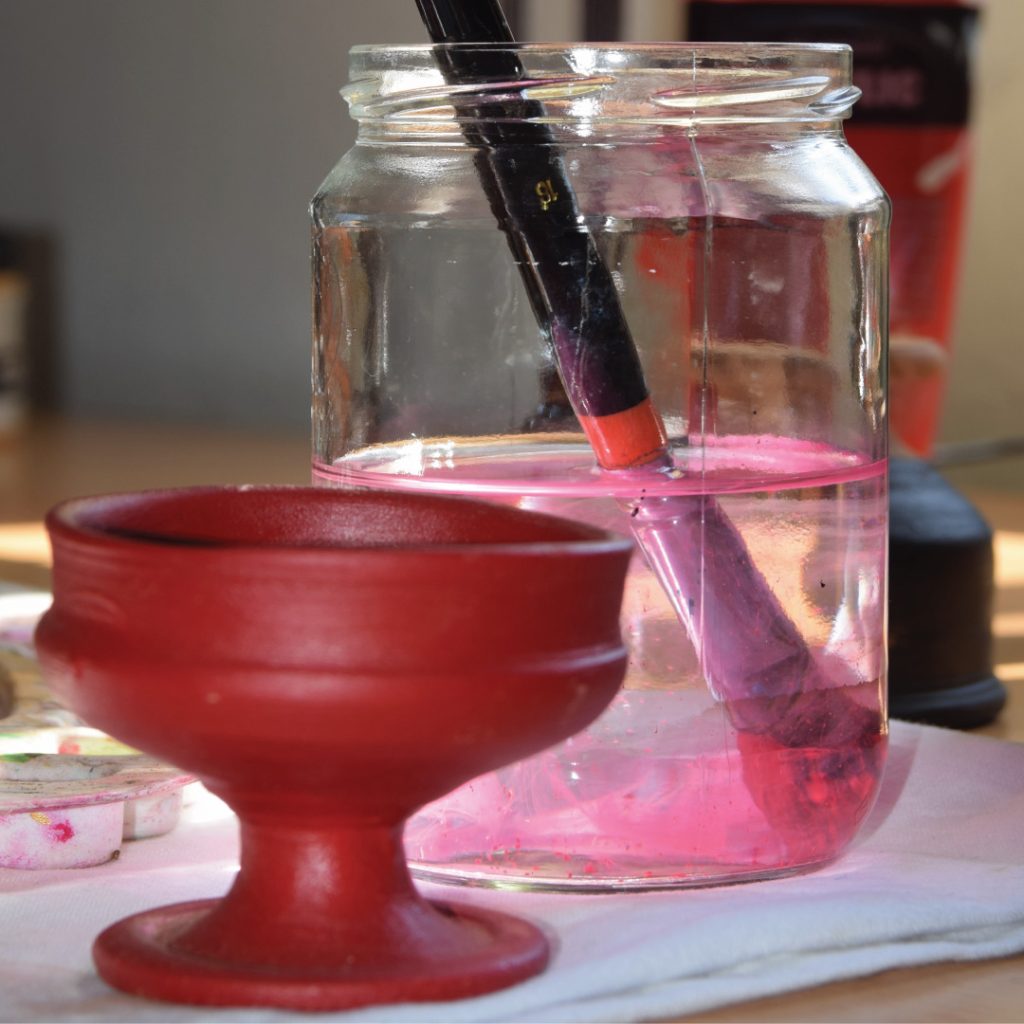
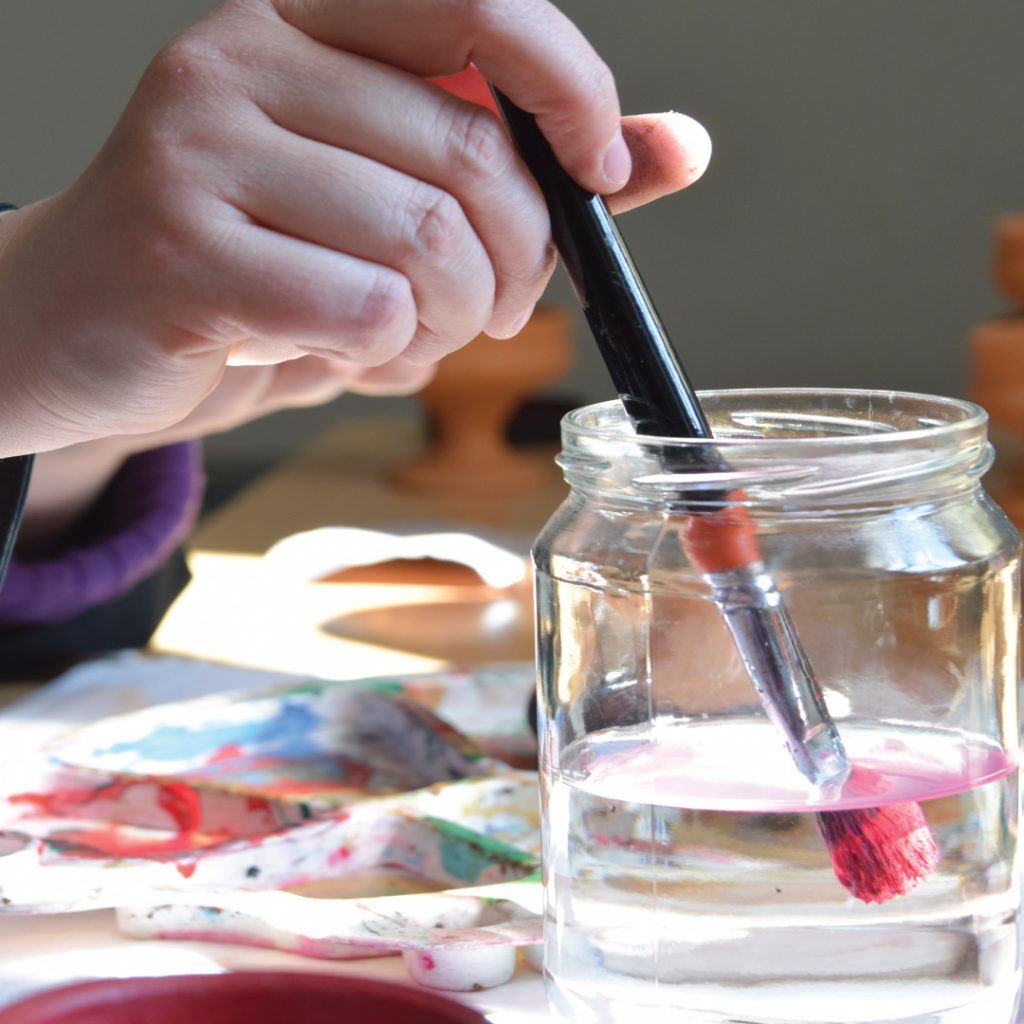
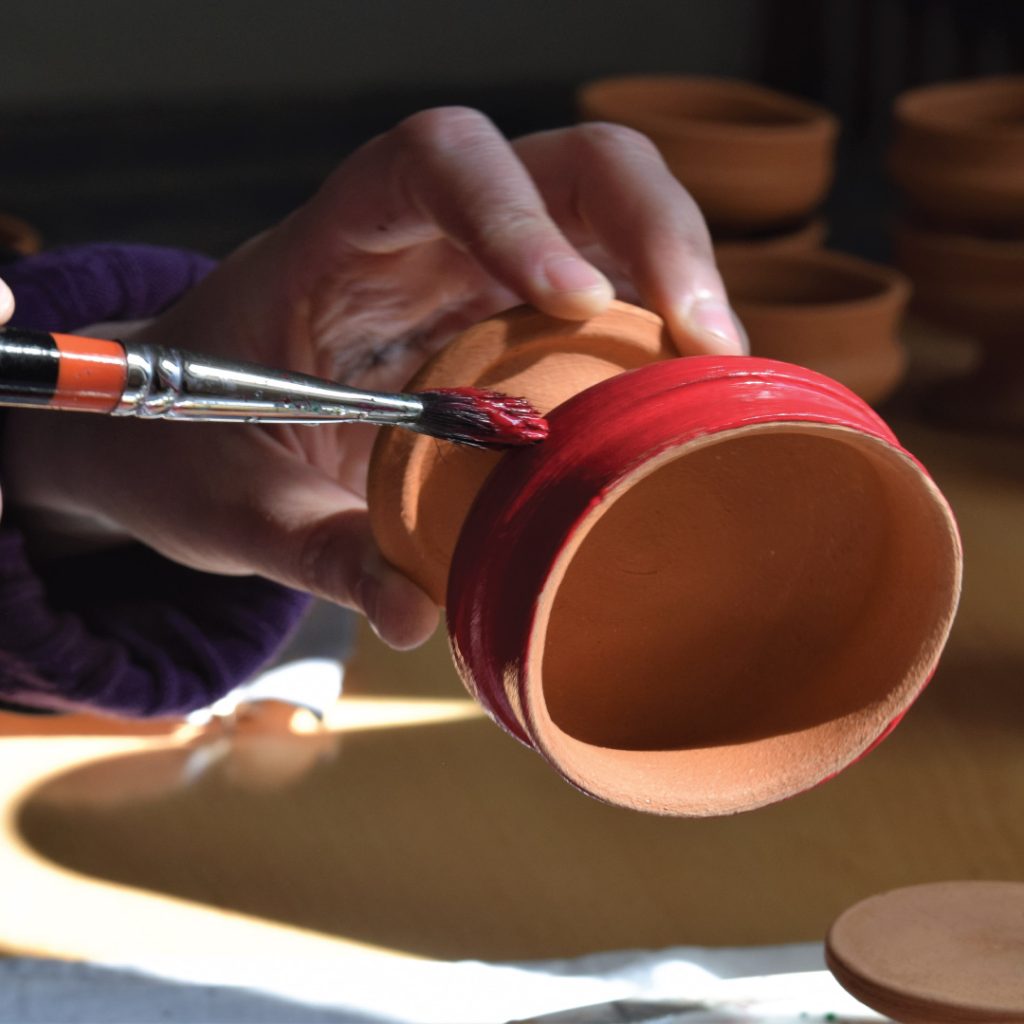
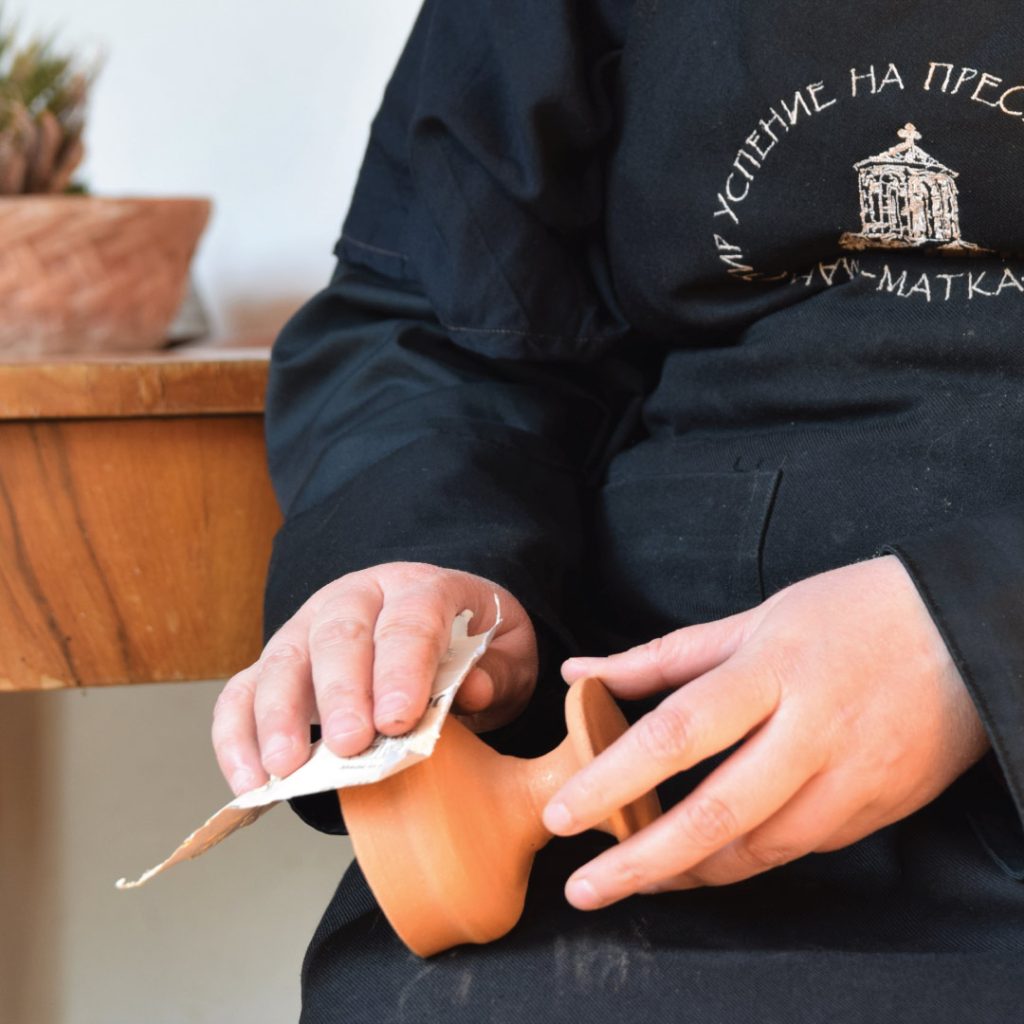
The refinement of the ceramic mugs and incense burners
The refinement with contour colors on the ceramic mugs and incense burners (censers) is another modest creative attempt to present the rich treasure of iconographic and church ornaments, as well as the authenticity of the patterns from the art and the folk costumes that our ancestors have created and left to us for centuries.

